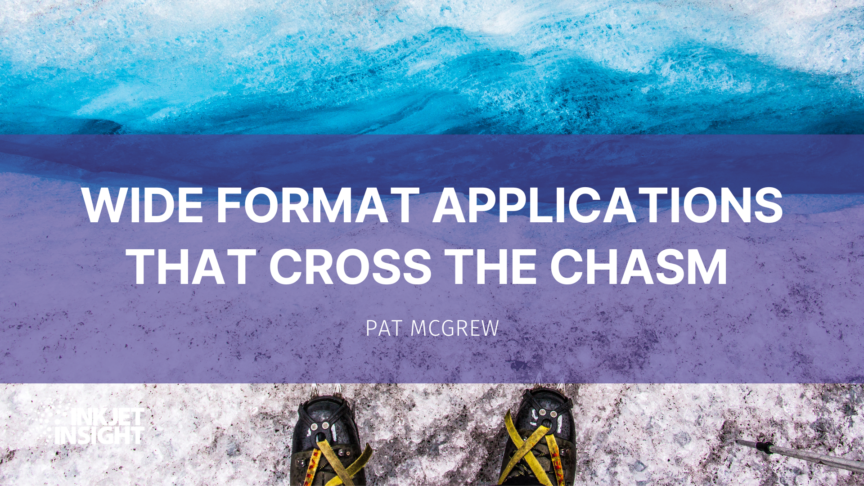What happens to your shop when you take a second look at the array of capable inkjet equipment sitting on the production floor? You could find a world of new opportunities for your product catalog, especially in product sets that you traditionally considered part of typical wide format capability sets. No matter what size or style production inkjet machine you have, if you want to expand your revenue streams, what you have may get you there.
Leveraging Sheet-fed Inkjet
The mission in this episode is to find crossover applications. These are the products you may be printing on your array of wide format sheet and roll-fed devices today, but which might also have a home on your sheet-fed production inkjet devices. Even if you don’t currently own one of the many fine wide format print devices, you may have options for offering equivalent wide format options to your clients. Here is how it works.
Start by identifying the sheet sizes you can print today. You may have one of the sheet-fed production devices that cater to the letter/legal or A4/A3 sizes, or you may have one that supports the larger B-size sheets. Look at what you can support and begin to look around at the world of print that is often executed on scanning-head wide format devices.
Paper Dimensions

If you have one of the machines that supports sheet up to 11 x 17 inches, this is the perfect size for many of the smaller format signs and posters you see in every retail, office, and manufacturing setting. Think about the process of printing those signs and posters on a typical multi-pass wide format printer. It takes time. Time limits potential capacity and revenue. Finding substrates that your production inkjet machine can support, looking at production throughput, and then building cost models for your estimating program can create attractive options for your customers.
If you have one of the devices that support sheets up to 13 x 27.56 inches, you have even more options. If your device supports banner printing with larger size drawers, you can address overhead banners – and all with single-pass printing. That versatility in a single-pass print system opens the door to building a competitive catalog of signs, posters, small folding cartons, and even complex fulfillment sets at a higher speed than possible with typical wide format solutions. More speed means more capacity and faster turnaround times!
So, what should you add to your product catalog?
- Signs
- Banners
- Posters
- Shelf tags
- Kits for product rollouts
- Folding cartons
But what if your production inkjet is roll-fed? We can make that work, too!
Leveraging Roll-fed Inkjet
Just as we did with the sheet-fed devices, we have to start with what width print you can support since that informs the products you can add to your catalog. But we also look at the substrates you can support. That is where you may need a quiet conversation with your hardware vendor and maybe some of your peers. The substrate options for roll-fed inkjet are constantly expanding. Not every inkjet web press can print on 9-point stock, but many can. Not all can print on wallpaper substrates or uncoated offset stock. But many can, and if you can, you have a world of options to print work that has typically been handled by slower multi-pass devices.
Every size device in this category can print signs. The wider devices can print larger signs, but most can print long banners. Look at the illustration of typical A and B size sheets and work out for your devices what your printable area is and how you can advertise specific size signs, posters, and other types of collateral. Because your device is single-pass and fast, you have the ability to do quick turnarounds. Your cost model has more flexibility, which means your pricing models have more flexibility.
The last episode included a description of how one company began printing store window signs for banks, retail, and grocery stores. This is just one example of common, almost disposable, signs in retail settings that could be a great product offering. Many of these signs are used indoors and don’t require long-term lightfastness or UV protection. For window signs, you could print signs duplex, with the image on the verso side printed as a mirror image of the front. The signs look as though you can see through them, and at night with store lights behind them, the signs glow!
So, what should you add to your product catalog? It is the same list as sheet-fed!
- Signs
- Banners
- Posters
- Shelf tags
- Kits for product rollouts
- Folding cartons
If you are currently running signs, posters, postcards, business cards, invitations and banners on wide format devices, this is a good time to reassess what device you are using for jobs that can run on substrates supported by your production inkjet!

